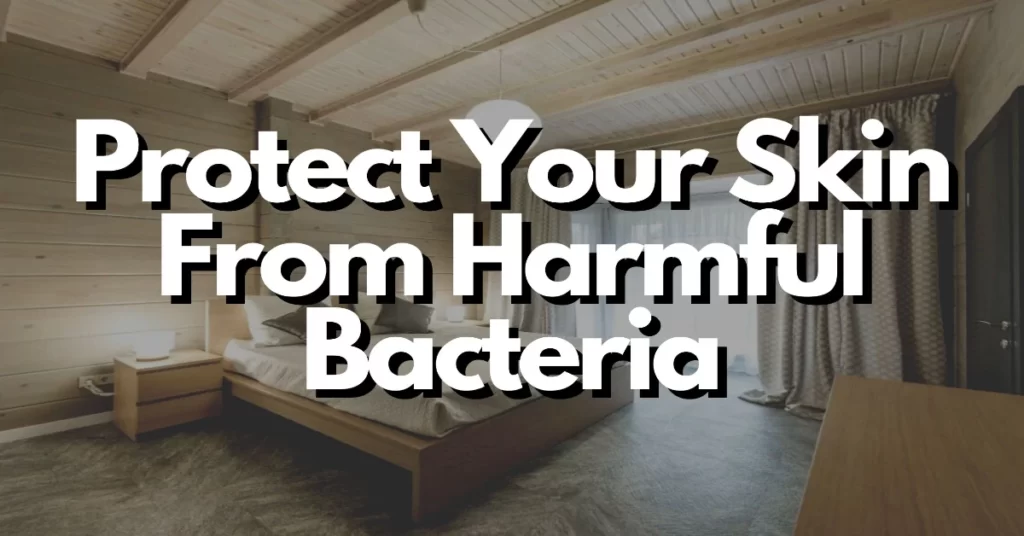The concept of a mattress foundation was born out of a need to protect against infection.
A mattress can be used as a layer over a layer of other materials to make the most of its potential to act as a barrier to infection.
It is usually composed of two or more layers, such as a mattress cover, a pillow cover, or even a waterproof material such as fleece.
When used properly, these materials can offer protection against germs and infections in the mattress itself.
But, when used improperly, they can become slippery, absorb water, and become contaminated.
In fact, in a study conducted by the Centers for Disease Control and Prevention (CDC), the number of beds that were contaminated by bacteria and viruses from bedding was about 60% higher than the average number of bedbugs in a community.
And according to a 2014 study published in the Journal of Environmental Medicine, bedding from multiple manufacturers accounted for about 40% of the total bedbug load in a rural community.
To help keep the mattress foundation safe, mattresses typically come with a liner or a coating that acts as a cushion.
The liner protects the surface from bacteria, while the coating helps keep the bed from becoming contaminated.
To keep things from getting slippery, mattress manufacturers also coat the surface with polyester fibers that are meant to help reduce friction and provide additional grip.
But some mattresses, such the Pinnacle mattresses from Mattel, have come under fire for using preservatives.
This product, which was marketed to protect the mattress from the sun and moisture, is made of synthetic materials that are supposed to stay put.
In one study, the Ponderosa Mattress Foundation was found to contain traces of benzalkonium chloride (BBCl), a preservative that is supposed to prevent mold and bacteria growth.
And the company is now recalling the product, saying that they have discovered that BBCl may be present in the formulation.
The company is also investigating whether the BBCl is in any way harmful.
Some mattresses have also been found to be more prone to breaking and falling.
A 2015 study published by the Journal, Pediatrics, found that children who slept on mattresses with the BBC coating were at a higher risk for asthma.
In a statement to HuffPost, Mattel said, “We have learned from this issue and are taking steps to prevent contamination of our mattresses in the future.”
While the mattress companies are aware of the issue and working to fix it, many people continue to believe that they are the best solution for preventing infections and protecting against bed bugs.
One of the biggest misconceptions that many people have is that mattresses are just another form of bedding, and that they can be made of anything.
The reality is, there is no one standard that is right for every person or situation.
But when it comes to mattresses or any other surface, a little thought goes a long way in ensuring that it is truly a protective surface that can be trusted to be there when it’s needed.
Here are some tips on how to keep your mattress safe: Know your mattress and its properties.
Mattresses are often referred to as “pillows” because they are made from a layer or “bulk” of fabric.
The idea behind mattresses is that they’re a lightweight, flexible material that can absorb and hold water.
But mattresses can also be used for other purposes, such a pillow case or bed cover.
Mattress companies also use a lot of polyester and polyester blends in their mattresses to create a product that is able to be a sponge and absorb water.
While these types of materials are designed to keep the surface soft, they are also meant to absorb some of the moisture that can make your mattress feel dry.
Make sure your mattress is not too large or too small.
Many mattresses come in small, medium, and large sizes, and some people find that they prefer a large mattress over a smaller one.
Some people also find that mattress covers are too small, and they prefer the covers to be bigger and more comfy.
Make your mattress smell good.
Mattches have a unique smell that can help them stand out when you’re outside.
When it comes down to it, matties are meant as an extension of your body.
So it makes sense that a mattress can smell good, too.
A little extra attention can go a long ways when it come to keeping your mattress smelling good.
Check your mattress for stains and scuffs.
If you notice that your mattress has any marks or scuffs, they may be from scratching, or you may have scratched your mattress before it arrived at your home.
Make the mattress smell clean.
It’s no secret that mattches are made of a material called polyester that is highly absorbent.
If it has any of the same marks or scratches that you noticed, make sure that the mattresses smell clean and not stained or scratched by bacteria or germs.

